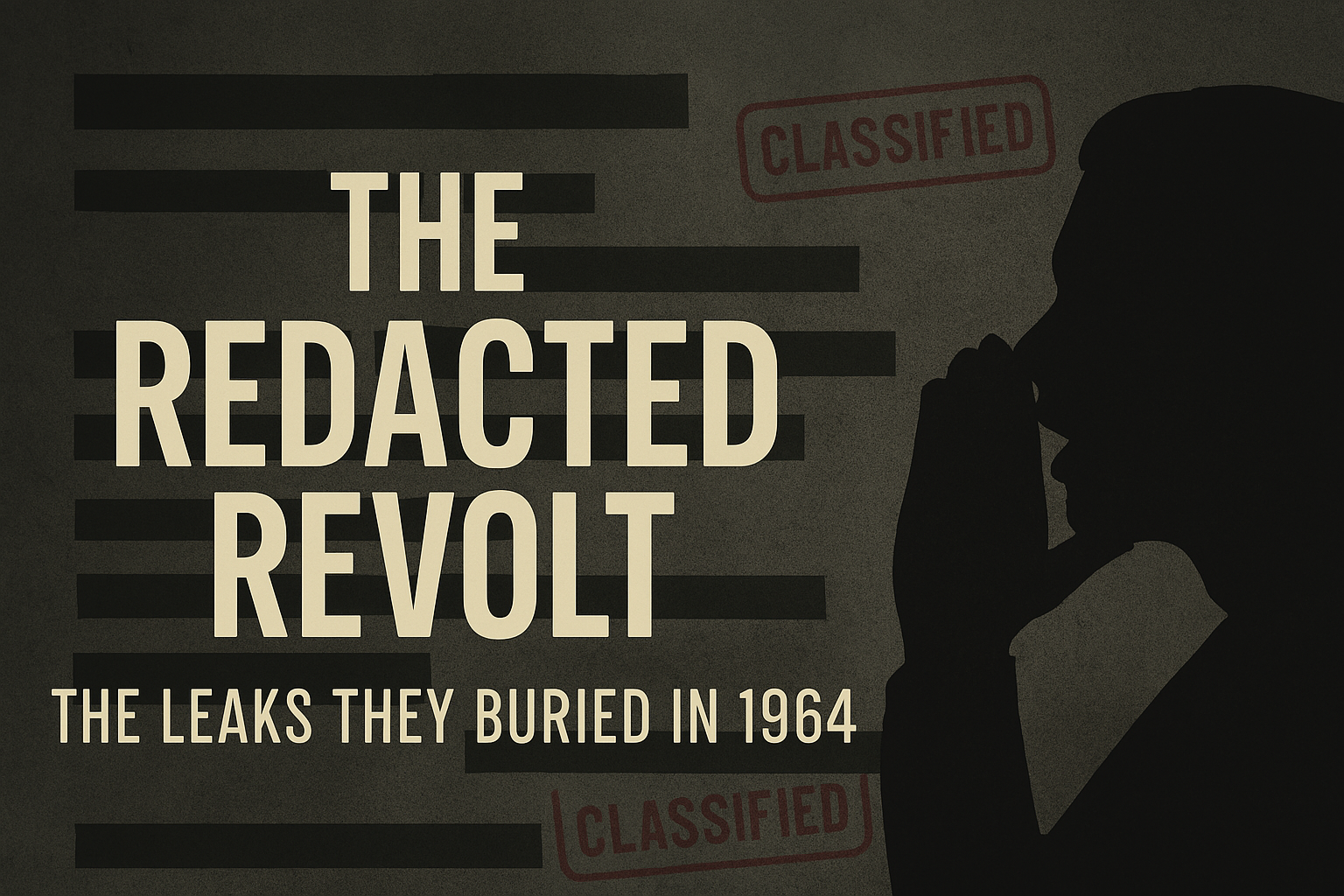Declassified memos and disciplinary reports reveal how whistleblowers inside the system tried-and failed-to speak up.
🚪 The Paper War
The Warren Commission may have ruled, but not everyone inside the government was on board.
The 2025 documents reveal at least six documented attempts by federal staffers to leak classified information about the JFK assassination between March and October 1964.
Most failed. One may have succeeded-but was discredited quickly.
📁 Case 1: The National Archives Courier
In April 1964, a courier named Donald F. Arliss was caught attempting to photocopy a “restricted subfolder” from the FBI’s internal Oswald file.
His administrative record (now unsealed) states:
“Subject expressed concern over inconsistencies between Oswald’s firearm order and chain of custody documentation.”
He was fired.
No charges filed.
A handwritten note on his dismissal:
“Keep quiet-he’ll comply.”
🧠 Case 2: The Internal Memo Leak to Foreign Press
A memo titled “Trajectory Variance Summary,” flagged in a State Department internal review, was leaked in part to a French journalist in July 1964.
The report included:
- Diagrams suggesting a frontal entry wound
- The phrase: “wound path incompatible with TSBD positioning”
- A handwritten addendum: “SAC [Special Agent in Charge] instructed to disregard secondary wound source”
The journalist’s story never ran.
He was found dead in 1973-officially ruled an overdose.
🔐 Case 3: The Attempted “Samizdat” Operation
A group of three Library of Congress archivists attempted to compile a private report titled “Chronological Conflicts in Official Evidence – JFK Case.”
Their research included:
- Conflicting timestamps on witness statements
- Deleted passages from early drafts of the Warren Report
- Suppressed internal interviews with CIA station officers
They were reported, reassigned, and their work was seized.
Their warning memo read:
“Violation of national security protocol through excessive curiosity.”
🔥 Pattern of Repression
Across the board, the strategy was consistent:
- Dismiss without criminal charges
- Frame dissent as “misconduct” or “insubordination”
- Ensure whistleblowers remained unemployable in federal systems
A newly declassified CIA directive from August 1964, labeled “Containment of Rogue Staff Narrative,” reads:
“In all departments, identify and preempt unauthorized narrative exploration.”
🔚 The Truth Tried to Get Out
The JFK files don’t just tell us what was hidden.
They show us how people inside the machine tried to expose it-and were silenced for it.
This wasn’t just a cover-up at the top.
It was a bureaucratic purge of truth-tellers.

Leave a Reply